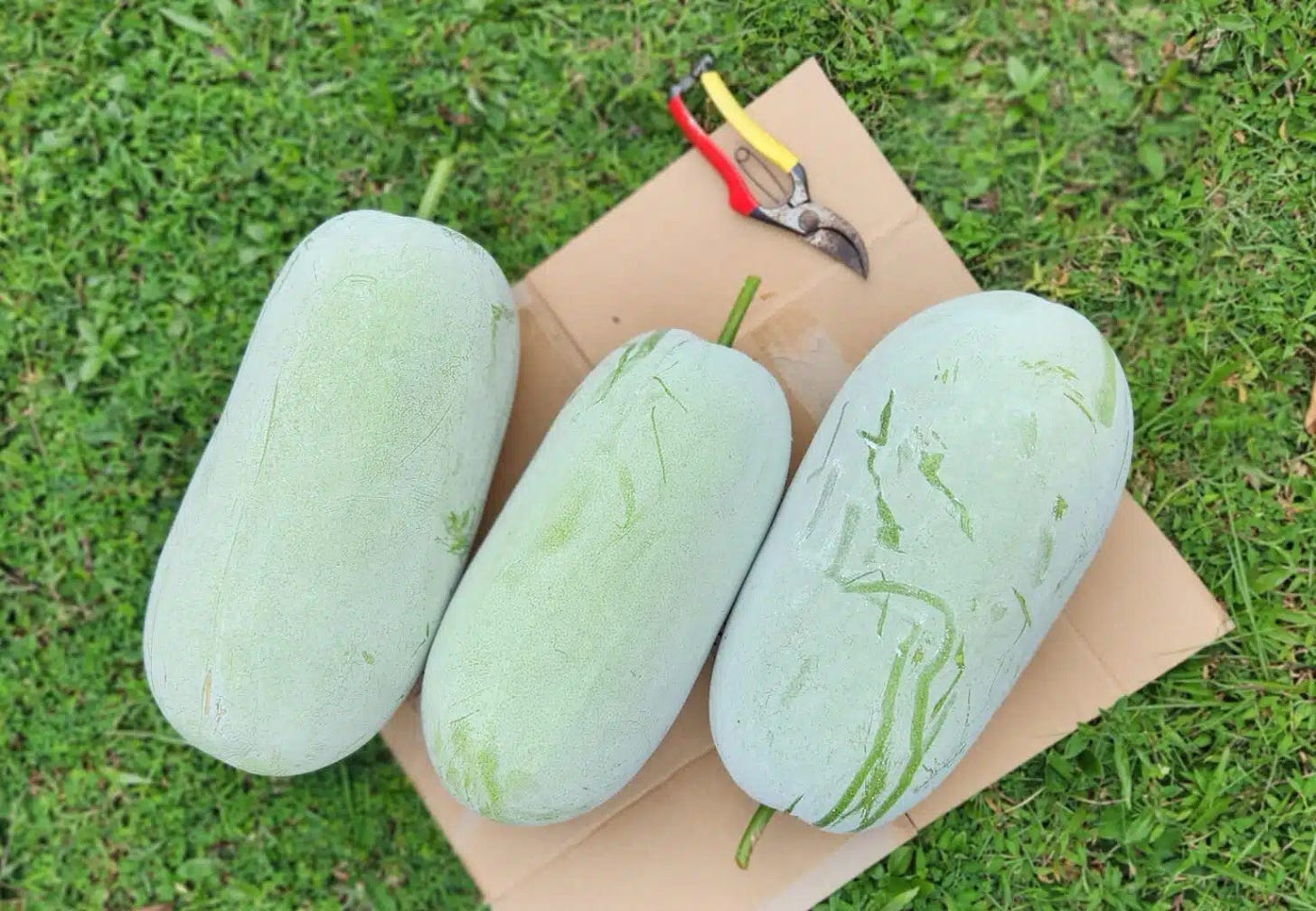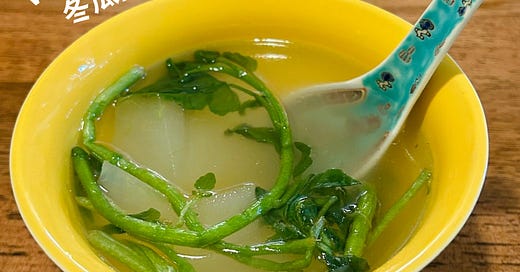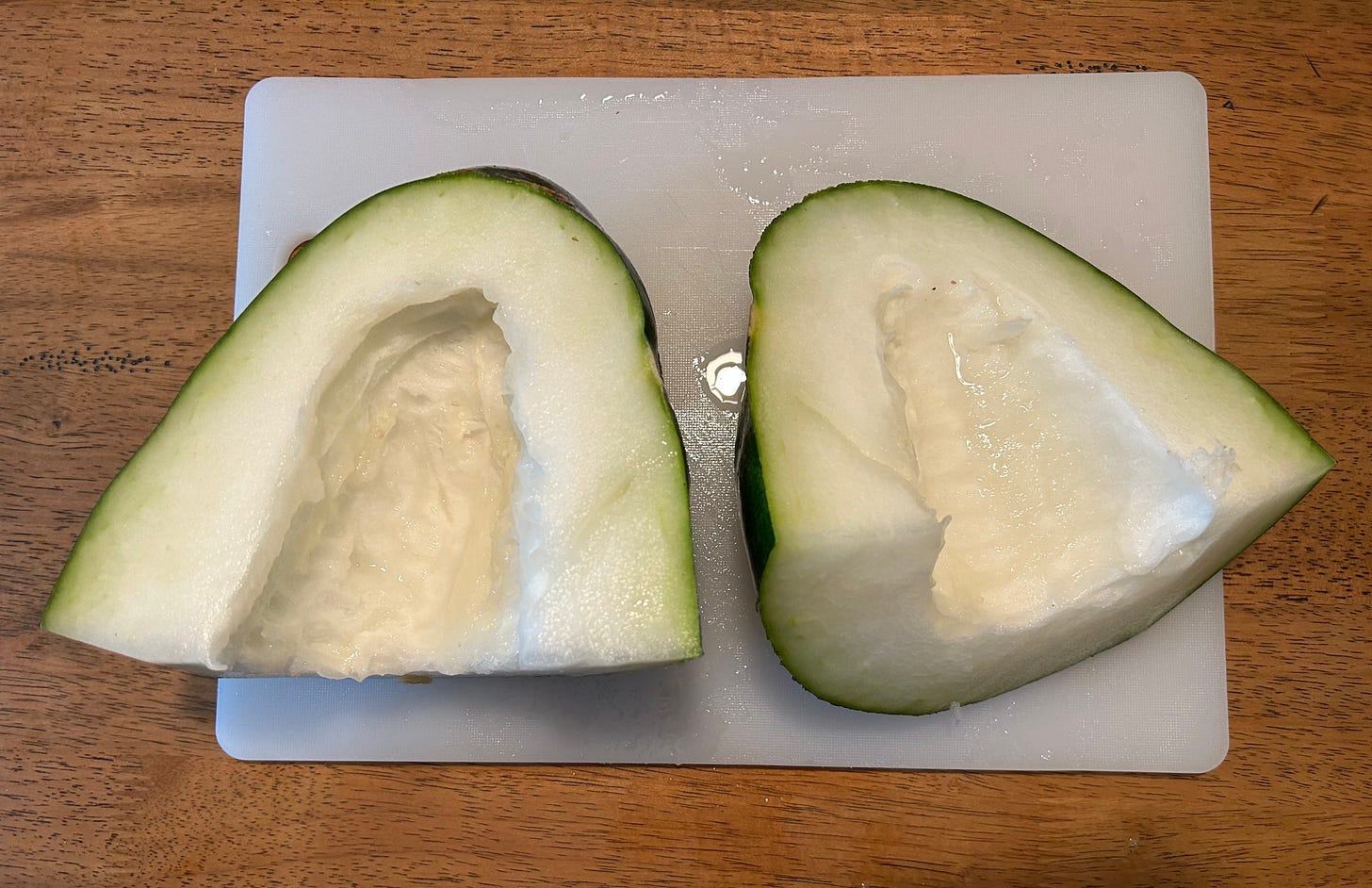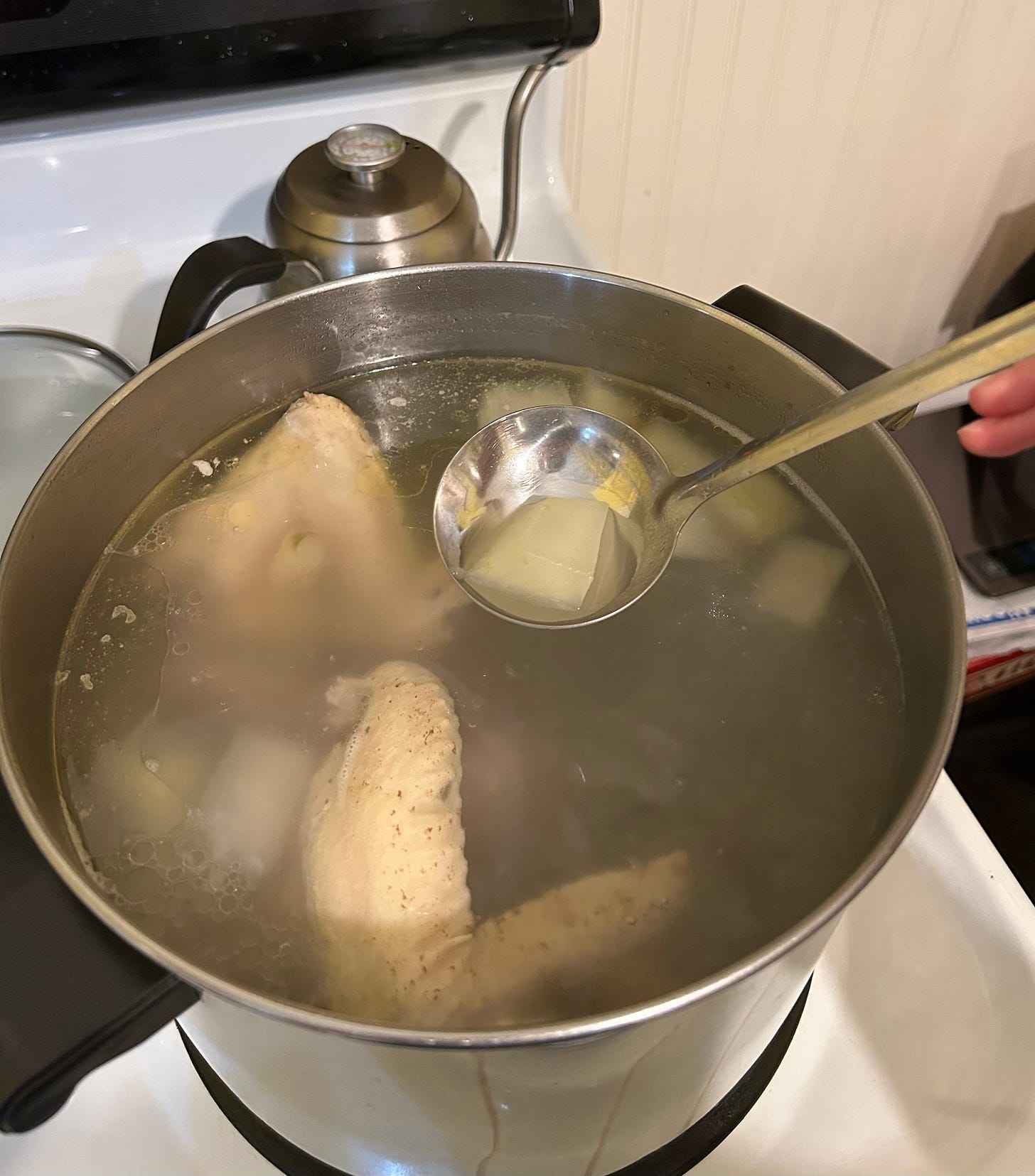I love reading cookbooks before bed, and most recently I was reading Teresa M. Chen’s A Tradition of Soup: Flavors from China’s Pearl River Delta. It does such a good job at describing how central soups are to Cantonese cuisine, whether as the base of porridges like jook, as a vehicle for noodles or crispy burnt rice, as a dessert, or a broth on its own. A soup can stretch one meal into many — turning carcasses and vegetable odds and ends into something almost decadent. But ultimately, the soups I grew up with aren’t all that decadent; they are beautifully simple. Describing how to make them feels less like a recipe than just common sense and like I’m doing something my grandparents, their grandparents, and their grandparents before them did too, and that feels kind of inexplicably special.
For this recipe, I’ve taken two classic Cantonese soup vegetables and combined them into a tong1 (“broth,” 汤) that has both the deliciously soft texture of the winter melon and the delicate and vegetal crunch of watercress. They’re effectively poached in a light broth of chicken wings and pork bones. It’s nothing fancy, but it really doesn’t need to be. It’s exactly the kind of hearty and delicious dish that so many Cantonese parents put on the dinner table. It’s the kind of Cantonese cooking you usually get at home rather than a restaurant, which makes it so nostalgic for so many of us who grew up with this tradition of soup.

This recipe requires half a normal sized winter melon. Despite its name, it’s actually in season in the summer, so this is the perfect time to make it. This recipe is very flexible, so as long as you have the vegetables, bones, and ginger, you can swap in or out other ingredients. I add dried shrimp and preserved turnip here for nuanced umami and salty flavors.
This recipe also uses the method of fei1 seoi2 (parboiling, 飞水) for the bones to produce a cleaner-looking (and to some, cleaner-tasting) broth. I’ve made this recipe with and without this method and both are delicious, so feel free to use this technique or skip it.
the recipe
Serves 4
Ingredients:
half of a winter melon (about 1-2 pounds)
0.5-1 lb watercress
1 lb pork bones
3-4 whole chicken wings
3-5 oz ginger
small handful of dried shrimp
small handful of preserved turnip (dried or fresh), roughly julienned (If you have trouble finding this, I recommend this version from Yun Hai. They ship throughout the U.S.)
salt to taste
Soak the dried ingredients: In a small bowl, set the dried shrimp and preserved turnip (only if dried) to soak for about 10 minutes.
Parboil the bones: Put the bones in a large pot and fill it with enough water to cover them by about an inch. Cover and leave them to boil on high heat. Once it reaches boiling, let them boil for about ten minutes. Skim and discard the scum off the surface of the water, then drain the bones and wipe off any scum left on them.
Prepare the produce: Cut off the skin of the winter melon and de-seed it. Dice into 1 or 1 1/2 inch cubes. Chop the watercress into 1 or 1 1/2 inch pieces. Peel and roughly chop the ginger into 1 or 2 inch pieces.
Boil the soup: Add the bones, ginger, preserved turnip, and dried shrimp to the pot and fill it about halfway to 3/4 full with water. Set it to boil on high heat and then partially cover it and reduce it to medium or medium low. Let it simmer for about an hour, and then add the winter melon. (This ensures that it will still have the ideal amount of bite when you serve it.) The winter melon will turn from opaque to translucent. Let it simmer for another hour, salt to taste, and then add the watercress.
Serve: After the watercress has poached for about a minute and turns bright green, serve the broth. The bones can be discarded.
I hope you enjoy this nourishing and traditional soup!







